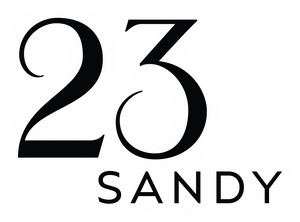| Title | Silence, Inspired by John Cage |
| Artist / Creator | Poppy Dully |
| Place of Publication | Portland, Oregon |
| Publication Date | 2012 |
| Author of Text | John Cage |
| Medium / Materials | Twenty four monotypes in sepia ink printed on book pages on front; nineteen monotypes in sepia ink printed on book pages on back; mounted on accordion folds; and rebound in original cover. |
| Number of Pages | 26 Pages |
| Dimensions (WxHxD) | 7 x 8.25 x .75 inches |
| Edition Size | Unique |
| Signed & Numbered | Yes |
Silence, Inspired by John Cage by Poppy Dully -SOLD!
Sold
Silence, inspired by John Cage’s music, writings, art.
I discovered John Cage’s first book, Silence, in a used bookstore. As I read sections from this book and researched his music and hisart, I grew in appreciation of this composer, writer,artist and performer.
Following a shared passion, I collected small river rocks from the North Umpqua River in Oregon as Cage had collected rocks from the New Riveron the east coast. I used the ovoid shapes of my rocks for the monotypes on the pages of Where Are We Going?, What Are We Doing?, Lecture on Nothing, and Lecture on Something. Cage used his rocks on paper in drawings, in watercolors and in photoetched prints, some of which are based on the drawings in Thoreau’s journals. A series of his drypoint prints is called Where R=Ryoanji. R stands for 15 stones and the number preceding R indicates how many times he drew around each stone. Cage made etchings at Crown Point Press in San Francisco, one week a year for 15 years, until he died in 1992.
My rocks in the monotypes were used randomly, as much as I would allow myself. Cage employed a sophisticated system called chance-determined points based on hexagrams of the I Ching. He used this system to compose his music and performance pieces.
As I worked on these monotypes, I started to see circle patterns elsewhere. On a spring hike in the Columbia Gorge, I watched water droplets of melting snow create rapid patterns of large and small concentric circles in the small pool at the base of a large pine tree. I listened to the drops hitting the water as the patterns emerged and thought of John Cage. Another time, in an art gallery, I studied how an artist’s paintings and etchings created energy and movement with color and shape in concentric circles.
I listened to John Cage’s Music for Keyboard, as I printed these monotypes. In 2012, music ensembles, symphonies, and music festivals are celebrating the 100th year of John Cage’s birth and the 20 years since his death.
Quotes from John Cage
“I saw art not as something that consisted of a communication from the artists to an audience, but rather as an activity of sounds in which the artist found a way to let the sounds be themselves.”
On Thoreau: “Each day his eyes and ears were open and empty to see and hear the world he lived in. Music is continuous; only listening is intermittent.”
“…a way of waking up to the very life we are living.”
Artist Bio
Artist Statement Poppy Dully’s interest in combining monotypes and book pages into altered books started from four sources: painting mentor Leigh Hyams’ pen and ink artist’s books; William Kentridge’s films and drawings on book pages; the films of French film director Agnes Varda; and a long ago college art assignment to study film for compositional references. When Poppy creates an altered book with monotypes she looks for a book that will relate in its size, format, and text with the film images. With a vintage set of psychology textbooks, Poppy began her experiment with altered books. Using a digital camera, she photographs scenes from the film that seem most eventful. From these photos, she selects 8 to 10 that can tell the story visually. These photos are her source material for the monotypes which she creates by drawing on the plate and then rolling and wiping off oil based ink on the reverse side of plexi-glass plates before printing on the book pages that she has separated from the book. She backs the dried monotypes onto accordion pages that she reassembles in the book’s original cover. Poppy continues to explore the relationship of storytelling in film and books in her altered books. Sometimes it is the discovery of a second hand book that connects her to a film and other times it is the moving images of the film that connects her to a book. Artist Biography Poppy Dully (b.1947, San Francisco, CA) is a Portland, Oregon painter, printmaker, and book artist. She works in acrylics, oil, pen, and ink on a variety of surfaces. She studied design and cultural anthropology as an undergraduate at University of California, Berkeley, received a Masters in Public Health from University of California Los Angeles and worked for over 20 years in fundraising and non profit management in Portland. She has shown her paintings and prints around the Northwest since 1998. Poppy’s altered book with monotypes, After Cleo, 5 to 7, was exhibited in the College Book Art Association nationally juried show at the 23 Sandy Gallery in December 2009.
